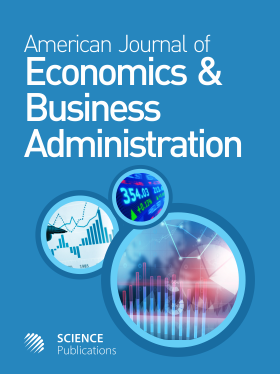Some Effects of Alternative Foreign Currency Translation Methodologies on two Short-Term Liquidity Ratios
- 1 Texas A and M University, France
Abstract
This study focused on two short-term liquidity ratios, the current ratio and inventory turnover and attempted to identify, in terms of empirical properties, if and in what ways foreign currency translation methodologies generate different results. Fifty companies’ accounts were translated from U.S. dollars to U.K. pounds. Post-translation Spearman rank correlation coefficients were extremely high for all methodology pairs, but t scores on meaningfully-paired observations indicated substantially different current ratio or inventory turnover numbers. But the results were not consistent from year to year and the results of all the fifty sample companies, taken together, did not hold for all the individual companies. At the firm level, the results were highly firm specific.
DOI: https://doi.org/10.3844/ajebasp.2011.645.651

- 3,464 Views
- 3,214 Downloads
- 1 Citations
Download
Keywords
- Foreign currency
- post-translation samples
- empirical properties
- Spearman rank correlation coefficient
- methodology pairs
- Current-Noncurrent Method (CNC)
- Monetary-Nonmonetary (MNM)
- Temporal Rate Method (TRM)
- alternative translation
- meaningfully-paired data
- short-term liquidity ratios
- inventory turnover
